
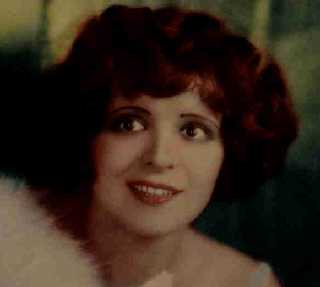


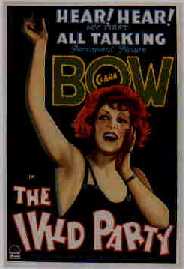 showcase a then currently hot female lead; all run up
against conflicts (within themselves, regarding attitude and structure) as a result of their outwardly
conventional scripts being compromised and/or torn apart by what might best be called their
proto-feminist stance; all are hurt by conventional endings that attempt to restore convention to the
film after the very idea has been exposed as false and/or hopeless (although Mothers manages to
rebound and have an appropriate fadeout); all remain indelibly of their period and at the same time
transcend it. The key difference between the films lies in the fact that Party was directed by a
woman – whereas the other two were helmed by old style studio directors (men) who were very set
within the studio system (Herbert Brenon and Jack Conway respectively). And it’s Arzner’s
direction, aided very much by Clara Bow’s effervescent personality, that gives The Wild Party a
decidedly modern tone that makes it by far the most fascinating of the three films. Granted, most of
the film’s interest comes from the inevitable friction caused by incompatible ideas plowing into one
another, but they don’t account for all of it, as both the star and director manage to make
considerable impact.3 And while it’s safe to say that the greatness the film does manage to achieve
was more the result of a happy combination of accidents rather than any serious artistic intent, that
takes nothing away from what was accomplished under the most trying and difficult of
circumstances. Hollywood has always created its masterpieces by accident, and if The Wild Party
occupies a decidedly minor rank among the elite standing of film greats, it is nonetheless an
important, and generally misunderstood film, that deserves a more serious and in-depth examination
than it has hitherto been accorded.
showcase a then currently hot female lead; all run up
against conflicts (within themselves, regarding attitude and structure) as a result of their outwardly
conventional scripts being compromised and/or torn apart by what might best be called their
proto-feminist stance; all are hurt by conventional endings that attempt to restore convention to the
film after the very idea has been exposed as false and/or hopeless (although Mothers manages to
rebound and have an appropriate fadeout); all remain indelibly of their period and at the same time
transcend it. The key difference between the films lies in the fact that Party was directed by a
woman – whereas the other two were helmed by old style studio directors (men) who were very set
within the studio system (Herbert Brenon and Jack Conway respectively). And it’s Arzner’s
direction, aided very much by Clara Bow’s effervescent personality, that gives The Wild Party a
decidedly modern tone that makes it by far the most fascinating of the three films. Granted, most of
the film’s interest comes from the inevitable friction caused by incompatible ideas plowing into one
another, but they don’t account for all of it, as both the star and director manage to make
considerable impact.3 And while it’s safe to say that the greatness the film does manage to achieve
was more the result of a happy combination of accidents rather than any serious artistic intent, that
takes nothing away from what was accomplished under the most trying and difficult of
circumstances. Hollywood has always created its masterpieces by accident, and if The Wild Party
occupies a decidedly minor rank among the elite standing of film greats, it is nonetheless an
important, and generally misunderstood film, that deserves a more serious and in-depth examination
than it has hitherto been accorded.
Indeed, a serious reassessment of Clara Bow’s entire film legacy is long overdue, although the effort is severely hampered by a number of missing titles, and the generally poor quality of some of the surviving material. Once beyond these obstacles, it becomes more and more apparent that the true reason Bow has been denied critical appreciation is her status as a Hollywood star, and even more so her standing of one of film’s supreme sex-symbols. No one is willing to take her seriously, even when they’re praising her. If Bow was mistreated throughout her career by Hollywood and her peers, she has been just as ill treated by critics and film historians. The general consensus is that nearly all her staring vehicles were trite and formulaic, and thus unworthy of any interest for anyone outside of those who, perhaps, wish to learn more about the period in which they were made. A good expression of the general attitude can be found in the words of critic Andrew Sarris, who said: "Bow made so many bad movies that any serious revision of her critical standing would involve plucking the pearls of her performances from the dung heap of her direction, and that is messy, tedious work."
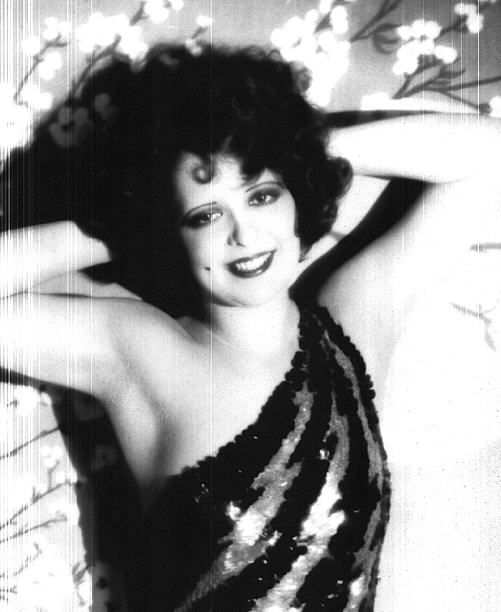 Sarris overstates his case, but one can expect little else from the critical mindset that tends to see no
value in anything except those works which announce themselves as high-art, or can be easily
identified as the work of an auteur. Put to that criteria, the careers of such stars as Garbo, Harlow,
and Monroe consisted of nothing but bad movies. When one hears a critic like Gerald Kaufman
state that Clark Gable only made two movies of exceptional quality (It Happened One Night and
Gone with the Wind), the uninitiated might wonder how in the world he ever managed to sustain a
thirty year career. The only possible answer is: Star Quality. Let’s face it, John Wayne was hardly
an actor in the classical sense, but when you gave him a role within his range he could carry many an
unworthy film (imagine even John Ford’s The Searchers (1956) without him – it wouldn’t be the
same film). My point here is that some films must be judged as more than the sum of their parts,
without any points given to those somehow perceived as more artistically worthy. Today, we have
two distinct classes of motion pictures: film, for the serious minded, and movies, for the Saturday
night crowd. But once upon a time, we also had the pure, unadulterated (by special effects and the
like) Star Vehicle: a movie built to the specific, tailor-made specifications of a magnetic star
presence.
Sarris overstates his case, but one can expect little else from the critical mindset that tends to see no
value in anything except those works which announce themselves as high-art, or can be easily
identified as the work of an auteur. Put to that criteria, the careers of such stars as Garbo, Harlow,
and Monroe consisted of nothing but bad movies. When one hears a critic like Gerald Kaufman
state that Clark Gable only made two movies of exceptional quality (It Happened One Night and
Gone with the Wind), the uninitiated might wonder how in the world he ever managed to sustain a
thirty year career. The only possible answer is: Star Quality. Let’s face it, John Wayne was hardly
an actor in the classical sense, but when you gave him a role within his range he could carry many an
unworthy film (imagine even John Ford’s The Searchers (1956) without him – it wouldn’t be the
same film). My point here is that some films must be judged as more than the sum of their parts,
without any points given to those somehow perceived as more artistically worthy. Today, we have
two distinct classes of motion pictures: film, for the serious minded, and movies, for the Saturday
night crowd. But once upon a time, we also had the pure, unadulterated (by special effects and the
like) Star Vehicle: a movie built to the specific, tailor-made specifications of a magnetic star
presence.
Clara Bow was a magnetic star presence. She had star quality – and how! (as one of her own characters might say). Almost every one of her films made between her breakthrough vehicle Mantrap in 1926 and her last, 1933’s Hoopla, was a film designed and made only to display her unmatched star quality. And in that respect, as crude and unworthy as many of them may seem at times, they are often successful. One doesn’t go into any Bow film expecting to be bowled over by the plot or direction; we are more the grateful if it just rises to the competent and keeps the actress sufficiently within the frame. What one does take away from nearly every Bow film is a succession of wholly unique moments that only she could have achieved, and which no other star (or actress for that matter) has been able to duplicate. She was truly one-of-a-kind.
When I run through my own catalogue of priceless Bow moments, there are several that jump out in
my mind: the unaffected teenager (16 at the time, and she looks all of 10) who playfully romped
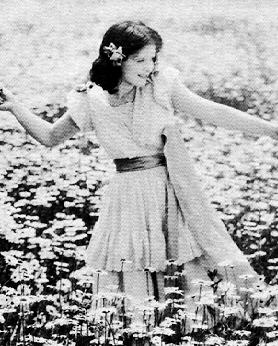 through fields of daisies at the end of Elmer Clifton’s Down to the Sea in Ships (1923); the
white-hot intensity of the battered slum child confronting the man who wronged her in the first
scenes of Free to Love (1925 – it makes the loss of 1927’s Ladies of the Mob all the more
tragic); her first appearance in My Lady of Whims (1925) – a long, slow shot of her peering eye
through a cracked door – that reveals the first glimpses of "It", and the exact shot was copied in It
(1927); a sleepy-eyed Clara confronting a boyish Gary Cooper the morning after in Children of
Divorce (1927); the awkward, tightrope walking angel (one beautiful five second shot) in
Dangerous Curves (1929); the long, five minute scene near the end of Call Her Savage (1932)
where, totally silent, Clara wallows in drunk reflection and self pity -- and was she ever more
beautiful? I can’t count (or pick) the number of Bow moments I hold dear from Mantrap, It, and
Hula (1927). Nor can I pick any moments from The Wild Party, because I think the whole film
should be cherished.
through fields of daisies at the end of Elmer Clifton’s Down to the Sea in Ships (1923); the
white-hot intensity of the battered slum child confronting the man who wronged her in the first
scenes of Free to Love (1925 – it makes the loss of 1927’s Ladies of the Mob all the more
tragic); her first appearance in My Lady of Whims (1925) – a long, slow shot of her peering eye
through a cracked door – that reveals the first glimpses of "It", and the exact shot was copied in It
(1927); a sleepy-eyed Clara confronting a boyish Gary Cooper the morning after in Children of
Divorce (1927); the awkward, tightrope walking angel (one beautiful five second shot) in
Dangerous Curves (1929); the long, five minute scene near the end of Call Her Savage (1932)
where, totally silent, Clara wallows in drunk reflection and self pity -- and was she ever more
beautiful? I can’t count (or pick) the number of Bow moments I hold dear from Mantrap, It, and
Hula (1927). Nor can I pick any moments from The Wild Party, because I think the whole film
should be cherished.
Certainly it’s too easy to fall into the trap that many people do: since the film was "regulation Bow
formula: ‘It’ girl goes to college" and an early talkie on top of it, most have dismissed The Wild
Party as being some kind of crude, historical dinosaur that is unworthy of any further study or
consideration. That the film is formula, there’s no denying; to dismiss the film outright because of it is
foolish. As noted historian William K. Everson once pointed out: "a carefully nurtured and honed
formula isn’t necessarily a bad thing – trying to create a new formula overnight (now think of
Dangerous Curves, 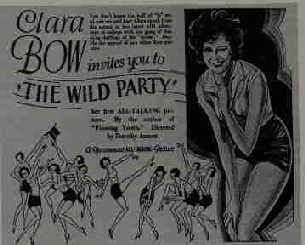 that striking odd-man-out among the Bow films) can be an invitation to
disaster." Part of the greatness that shines forth in The Wild Party comes expressly from the fact
that it was working within the established formula of its star – while at the same time adding new
depth to it. Unfortunately, very few people who have chosen to write about the film have bothered
to look beyond its more technically dated aspects to find what the film is really saying. Practically
every statement I have read in relation to the film is either exaggerated or blatantly
misrepresentative. Let’s not succumb to the idiotically simplistic argument that too many writers use
when dealing with the early sound period. Yes, it’s correct when some write that practically all the
films made during the period were created in disarray; yes, it’s true practically every performer in
Hollywood became a basket-case wondering whether of not their career would survive; but the
films that resulted were not all disasters, as they’re often dismissed. Some were, but there are others
that found their way around the chaos that spawned them, and remain enjoyable and even
enlightening today. But as the films are not generally available, and hard to find even for those who
want to see them, it’s difficult to dispute the old cliché of film history that many still believe. (For a
very revealing and honest look at the early sound period, I recommend Richard Barrios excellentA
Song in the Dark, which examines much of the transition period in detail.)
that striking odd-man-out among the Bow films) can be an invitation to
disaster." Part of the greatness that shines forth in The Wild Party comes expressly from the fact
that it was working within the established formula of its star – while at the same time adding new
depth to it. Unfortunately, very few people who have chosen to write about the film have bothered
to look beyond its more technically dated aspects to find what the film is really saying. Practically
every statement I have read in relation to the film is either exaggerated or blatantly
misrepresentative. Let’s not succumb to the idiotically simplistic argument that too many writers use
when dealing with the early sound period. Yes, it’s correct when some write that practically all the
films made during the period were created in disarray; yes, it’s true practically every performer in
Hollywood became a basket-case wondering whether of not their career would survive; but the
films that resulted were not all disasters, as they’re often dismissed. Some were, but there are others
that found their way around the chaos that spawned them, and remain enjoyable and even
enlightening today. But as the films are not generally available, and hard to find even for those who
want to see them, it’s difficult to dispute the old cliché of film history that many still believe. (For a
very revealing and honest look at the early sound period, I recommend Richard Barrios excellentA
Song in the Dark, which examines much of the transition period in detail.)
I saw many of Clara’s films for the first time back in 1988 at New York’s Film Forum, which ran a
large scale Bow retrospective in conjunction with the publication of David Stenn’s Bow biography.
The Wild Party was one of the films I encountered during that festival, and by the time it was over
I was in a state of shock. I just couldn’t believe how much in the film was technically innovative and
 experimental for a film that had been shot in early 1929. Up to that point, I had seen several early
talkies – such as Rouben Mamoulian’s interesting but overrated Applause (1929) -- and they all
fell short of the number of innovations that Dorothy Arzner brought to Bow’s first talkie.4 Granted,
much of what Arzner accomplished was considered standard in a relatively short period of time, but
as of April 1929 (Party’s release) I challenge anyone to point out another Hollywood sound film
that includes: fluidity in cutting, often cutting between long shots, to medium, to close-ups in the
midst of dialogue – never is this the static early talkie that one might expect; the use of background
and overlapping dialogue during scenes (which is not delivered in the expected "tranquilized fashion"
of the early talkies, a couple of odd lines excepted); the use of visual symbolism to connect one
scene to another (note the shoe that causes Clara’s downfall – it was a silent film technique that
wasn’t present in many other early talkies); and finally, the use of background music – mostly
variations on the catchy title song – but still very unusual for a time when it was nightmare enough to
get the dialogue recorded properly. Today, none of these might seem like much, but for the time
they were little short of stunning; one can find films shot in 1931 that weren’t anywhere near as
technically adroit as Party was in 1929. And its these innovations, coupled with the film’s decidedly
feminist tone, that makes the film one of the most fascinating of the early talkies, and certainly the
one most ripe for rediscovery.
experimental for a film that had been shot in early 1929. Up to that point, I had seen several early
talkies – such as Rouben Mamoulian’s interesting but overrated Applause (1929) -- and they all
fell short of the number of innovations that Dorothy Arzner brought to Bow’s first talkie.4 Granted,
much of what Arzner accomplished was considered standard in a relatively short period of time, but
as of April 1929 (Party’s release) I challenge anyone to point out another Hollywood sound film
that includes: fluidity in cutting, often cutting between long shots, to medium, to close-ups in the
midst of dialogue – never is this the static early talkie that one might expect; the use of background
and overlapping dialogue during scenes (which is not delivered in the expected "tranquilized fashion"
of the early talkies, a couple of odd lines excepted); the use of visual symbolism to connect one
scene to another (note the shoe that causes Clara’s downfall – it was a silent film technique that
wasn’t present in many other early talkies); and finally, the use of background music – mostly
variations on the catchy title song – but still very unusual for a time when it was nightmare enough to
get the dialogue recorded properly. Today, none of these might seem like much, but for the time
they were little short of stunning; one can find films shot in 1931 that weren’t anywhere near as
technically adroit as Party was in 1929. And its these innovations, coupled with the film’s decidedly
feminist tone, that makes the film one of the most fascinating of the early talkies, and certainly the
one most ripe for rediscovery.
Of course, all these would add up to little if it wasn’t for Clara Bow’s sparkling presence in the
center of it all. Forget for a moment that she was a silent actress and objectively examine her work
here. It is fabulous, and superior to almost any other performance she gave throughout the
 remainder of her career. If nothing else, The Wild Party dispels the old myth that sound or voice
had anything to do with Clara Bow’s premature retirement as a film star. When it was made in 1929
she was at the height of her popularity, and she would continue to be a major film star for two years.
But her clock was winding down. With the end of the twenties and the Depression, a new morality
swept the nation, and Clara Bow was not only considered a grim reminder of the giddy decade she
so symbolized, but also the ultimate symbol of Hollywood degradation. Too many scandals and bad
decisions came back to haunt her, and when she finally left Hollywood for good in 1933, she was
pretty much a broken woman. Looking at The Wild Party, one can almost sense the turning tide. If
Pauline Kael could inaccurately assess Bow’s appeal in the film as being "both repulsive and
irresistible," she nonetheless hits upon the Jekyll and Hyde attitude of the film: it both loves Bow,
and reviles her.5 One is often pressed to determine whether the film is really just formula, when it
more often plays like a studio sanctioned attack on its leading lady and her famous lifestyle. Stenn
writes that the entire production was a "traumatic" experience for Bow, and when you listen to some
of the criticisms hurled at her throughout the film, you can perhaps understand why. For example:
remainder of her career. If nothing else, The Wild Party dispels the old myth that sound or voice
had anything to do with Clara Bow’s premature retirement as a film star. When it was made in 1929
she was at the height of her popularity, and she would continue to be a major film star for two years.
But her clock was winding down. With the end of the twenties and the Depression, a new morality
swept the nation, and Clara Bow was not only considered a grim reminder of the giddy decade she
so symbolized, but also the ultimate symbol of Hollywood degradation. Too many scandals and bad
decisions came back to haunt her, and when she finally left Hollywood for good in 1933, she was
pretty much a broken woman. Looking at The Wild Party, one can almost sense the turning tide. If
Pauline Kael could inaccurately assess Bow’s appeal in the film as being "both repulsive and
irresistible," she nonetheless hits upon the Jekyll and Hyde attitude of the film: it both loves Bow,
and reviles her.5 One is often pressed to determine whether the film is really just formula, when it
more often plays like a studio sanctioned attack on its leading lady and her famous lifestyle. Stenn
writes that the entire production was a "traumatic" experience for Bow, and when you listen to some
of the criticisms hurled at her throughout the film, you can perhaps understand why. For example:
"You’re a little fool. You and others like you have turned the college into a country club for four years. You have no aim; all you want is cheap sen- sation. Life to you is just one wild party!"
"You’re selfish! Anything for a thrill."
"You think all men are alike. Well they are, to one type of girl!"
"How many guys are you in love with? Why, a few minutes ago you were getting pash with me. And if it wasn’t me it’d be someone else!
You couldn’t love anybody."
Can anyone even begin to imagine the impact of such dialogue, hurled over and over again at an
actress as fragile and insecure as Bow was? Here she was, already petrified over how her voice
was going to be perceived in talkies, and this is the type of dialogue she was forced to listen to?
With all the studio back-stabbing many have been anxious to lay at the feet of B. P. Schulberg and
Paramount in relation to 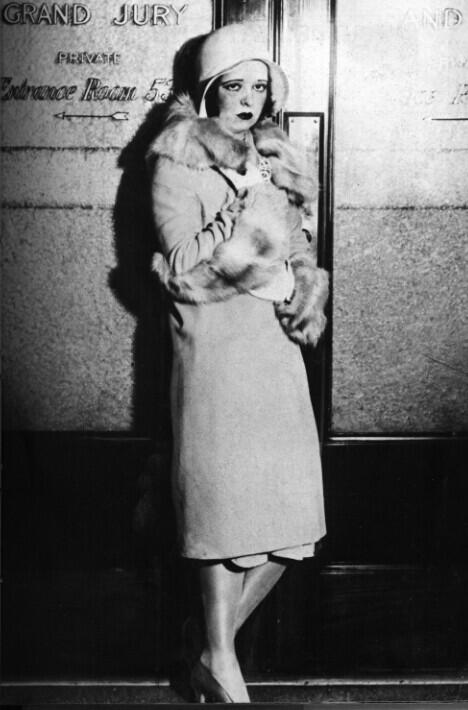 Bow’s career, here’s a big one that they missed. Is it possible that with
everything else that was going on at the time -- with the insecurity everyone was feeling in the midst
of the new medium – that Paramount could have chosen this way to inform its most popular star that
her previous free and easy ways were no longer to be tolerated? I know of no other Star Vehicle
that’s so critical of the star it’s suppose to be celebrating (remember how many millions Paramount
had made off of Bow up to this point). One continually asks during the film: "Is this the story of
Stella Ames (Clara’s character in the film) or is it a portrait of Clara Bow, as perceived by those
who never understood her or her appeal?"6 The blurred line between fiction and reality seems to be
one the star was unprepared to handle. It’s harrowing to watch her try and defend herself in the film;
not only is her character on trial – Clara Bow is on trial. And the case is very much weighed
against her. At points, she seems incapable of any defense or justification for her actions outside of
her pitiful declarations of "It’s not true!" and the like. Doubtless, if the script for The Wild Party
had been filmed with an emphasis on what was written as opposed to the more subtle forms of
communication, one would probably leave the theater with little more than disdain for its leading
lady, which may indeed have been what the authors -- and the studio -- intended.
Bow’s career, here’s a big one that they missed. Is it possible that with
everything else that was going on at the time -- with the insecurity everyone was feeling in the midst
of the new medium – that Paramount could have chosen this way to inform its most popular star that
her previous free and easy ways were no longer to be tolerated? I know of no other Star Vehicle
that’s so critical of the star it’s suppose to be celebrating (remember how many millions Paramount
had made off of Bow up to this point). One continually asks during the film: "Is this the story of
Stella Ames (Clara’s character in the film) or is it a portrait of Clara Bow, as perceived by those
who never understood her or her appeal?"6 The blurred line between fiction and reality seems to be
one the star was unprepared to handle. It’s harrowing to watch her try and defend herself in the film;
not only is her character on trial – Clara Bow is on trial. And the case is very much weighed
against her. At points, she seems incapable of any defense or justification for her actions outside of
her pitiful declarations of "It’s not true!" and the like. Doubtless, if the script for The Wild Party
had been filmed with an emphasis on what was written as opposed to the more subtle forms of
communication, one would probably leave the theater with little more than disdain for its leading
lady, which may indeed have been what the authors -- and the studio -- intended.
Thankfully, that’s not what occurred, and for that all credit must go to Dorothy Arzner. For if Clara had any champion behind the scenes on the film, Arzner appears to have been it. Every time the script throws out a belittling remark toward its leading lady, she’s right in there to undermine it. In the film, even Stella (Clara) dismisses herself as "silly and frivolous," but it’s she who mothers and encourages Helen (Shirley O’Hara), the one student in her entourage to excel, even to the point of walking out on another of her "wild parties." She may be a "fool" in the eyes of dishy professor Fredric March, but in the eyes of her companions she’s a girl who "knows her onions" and can take care of herself. And while she may be "selfish" to the eyes of goody-goody students like Marceline Day (her cold and prudish performance – though perfect here – shows why she didn’t last in talkies), it’s Stella who throws over her own life and future when Helen’s is threatened by scandal. It’s almost as though Arzner were cheering from the sidelines: "You may have your complaints with the modern woman, but she’s still better than you! Would you have the guts to do what she does?" It’s another of the similarities that Party shares with Dancing Mothers and Our Modern Maidens. David Robinson, in an excellent essay he wrote on Bow back in 1965, analyzed it:
"Bow fitted perfectly a character which is recurrentin the films of the later Twenties – the flapper, the wild party girl, the inheritor of post-war woman’s emancipation, an emancipation which was not simply political but involved equally liberation from demanding Victorian domestic habits and from Victorian moral restraints. The character and the films reveal a touching determination to vindicate the new girl and her new, liberated morality. The films always take much the same form. The girl’s parents and her young man are alarmed and shocked by her recklessness and wildness and independence. She seems not to care what she says or where she goes or what she does or with whom she does it. But when she is put to the ultimate test, the Modern Girl reveals resources of honesty and strength and decency and a capacity for self-sacrifice and courage quite unknown to her meeker sisters."
And so it is in The Wild Party. On the surface, the plot is trite and corny – Clara’s college co-ed
has a fling with the newest professor – but if you think that’s what the film is about, then you’d also
dismiss Citizen Kane as being the story of a guy and his sled. Director Arzner starts with the plot,
but by the time the film is half over she has bent it into pretzels. Little time is devoted to the plot; the
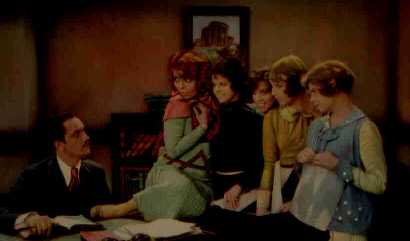 director spends most of her time developing almost every one of her female characters. The women
are recognizably human, while the men who surround them are caricatures -- drunk, indifferent, or
worse. Arzner seems to have no use for them, and at times even seems to imply that men can be
nothing but a destructive force to that special bond that exists only between women. It’s because of
this that many have accused the film of having a lesbian subtext – which to me seems ridiculous and
was viciously denied by the director -- but it’s certainly not your standard Hollywood fare of 1929.
Does the following – the film’s opening scene -- reveal anything that should be read as having a
subtext? The sorority sisters are hanging out in their dorm preparing for the new school year. They
gossip among themselves, joke, compare notes on men, ridicule the idea that they could learn
anything valuable from college. Stella tells the story about her run-in with a stranger on the train
coming to school – all the girls are concerned with was whether or not he was good looking. When
he’s discovered to be the new professor, the girls decide to bait him by enrolling in his class. What
is going on here? Nothing really, except a glimpse into the woman’s world as it may have been at
the time. But wait a minute. Aren’t any of these girls interested in doing any of the proper things that
would have been expected of a young college age woman of the day? Most other Hollywood films
made during the same period tow the conventional line in relation to women’s goals and aims in the
world: they’re out to catch a man
director spends most of her time developing almost every one of her female characters. The women
are recognizably human, while the men who surround them are caricatures -- drunk, indifferent, or
worse. Arzner seems to have no use for them, and at times even seems to imply that men can be
nothing but a destructive force to that special bond that exists only between women. It’s because of
this that many have accused the film of having a lesbian subtext – which to me seems ridiculous and
was viciously denied by the director -- but it’s certainly not your standard Hollywood fare of 1929.
Does the following – the film’s opening scene -- reveal anything that should be read as having a
subtext? The sorority sisters are hanging out in their dorm preparing for the new school year. They
gossip among themselves, joke, compare notes on men, ridicule the idea that they could learn
anything valuable from college. Stella tells the story about her run-in with a stranger on the train
coming to school – all the girls are concerned with was whether or not he was good looking. When
he’s discovered to be the new professor, the girls decide to bait him by enrolling in his class. What
is going on here? Nothing really, except a glimpse into the woman’s world as it may have been at
the time. But wait a minute. Aren’t any of these girls interested in doing any of the proper things that
would have been expected of a young college age woman of the day? Most other Hollywood films
made during the same period tow the conventional line in relation to women’s goals and aims in the
world: they’re out to catch a man 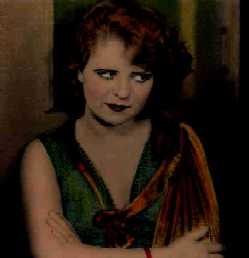 and then have a family. The girls in The Wild Party are certainly
out to catch men, but they have other goals as well; men remain only a momentary diversion. One
thinks of Stella (Clara) parading through a party in her slinky dress seductively kissing one man after
another, her only concern being that she is popular – and even more popular with the girls than she
is with the guys. One thinks of her roommate Helen, the aforementioned serious student, who is
determined to win a scholarship so that she can remain at college. She even has the nerve to quip at
one point (while seated behind a typewriter buried in her work): "I have no time for men." Or there
is the scheming Eva Tutt (Joyce Compton), anxious to dish the dirt out on anybody if it will get her
through school easier; or Faith (Marceline Day), devoted to the college and its creed for the
betterment of women. They struggle forward, and all the while they’re considered as little more than
pretty, decorative nothings by the men they encounter. All the conflicts and problems in the film arise
because of the men. The film seems to imply that student Clara was just breezing through college
until Professor March came along, and it’s through her relationship with him that the wheels are set
in motion that forces Clara to leave school. Men at a roadhouse need to see little more than the sight
of Clara in a bathing suit to provoke them to rape. Helen almost loses her scholarship because a
man writes her lurid love letters that fall into the wrong hands. Again and again, men are presented
as the great obstacle in the path of the women’s success and happiness, while the women continue
to struggle gamely through what they know is – but hope won’t always be -- a men’s world.
and then have a family. The girls in The Wild Party are certainly
out to catch men, but they have other goals as well; men remain only a momentary diversion. One
thinks of Stella (Clara) parading through a party in her slinky dress seductively kissing one man after
another, her only concern being that she is popular – and even more popular with the girls than she
is with the guys. One thinks of her roommate Helen, the aforementioned serious student, who is
determined to win a scholarship so that she can remain at college. She even has the nerve to quip at
one point (while seated behind a typewriter buried in her work): "I have no time for men." Or there
is the scheming Eva Tutt (Joyce Compton), anxious to dish the dirt out on anybody if it will get her
through school easier; or Faith (Marceline Day), devoted to the college and its creed for the
betterment of women. They struggle forward, and all the while they’re considered as little more than
pretty, decorative nothings by the men they encounter. All the conflicts and problems in the film arise
because of the men. The film seems to imply that student Clara was just breezing through college
until Professor March came along, and it’s through her relationship with him that the wheels are set
in motion that forces Clara to leave school. Men at a roadhouse need to see little more than the sight
of Clara in a bathing suit to provoke them to rape. Helen almost loses her scholarship because a
man writes her lurid love letters that fall into the wrong hands. Again and again, men are presented
as the great obstacle in the path of the women’s success and happiness, while the women continue
to struggle gamely through what they know is – but hope won’t always be -- a men’s world.
So in the end, the persistence wins out. The women reign supreme after the struggle through the
sheer force of their personalities. And needless to say, Clara Bow was the greatest personality of
them all. It’s true, that Party presents us with a very different Clara Bow than had been seen prior
to the advent of sound – but by that time the whole nature of screen acting was going through
change. The previous wild abandon Clara had exhibited in nearly all her silent vehicles 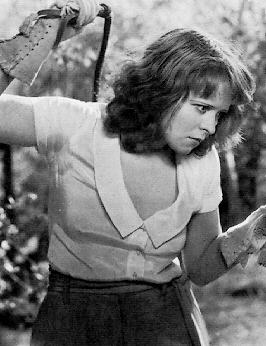 would no
longer work (look at some of Clara’s scenes in Call Her Savage: with no director control she
sometimes reverts back to her old silent mannerisms, which lend the film some of its most campy
moments). Whatever it was that managed to subdue Clara during Party’s filming, whether it was
Arzner’s directoral control or just plain fear, the result was one of the most soulful and moving
performances in all film. When everything finally comes together in The Wild Party, as it does in
the final fifteen minutes, it washes away any argument that formula films or Star Vehicles can’t
achieve the force and power of great art. And they are key to an understanding of the film and an
appreciation of its greatness. It’s here that Clara’s Star Quality and Arzner’s directing skills and
subtle feminist attitudes collide against the film’s anti-Bow scripting and leave it in a mangled heap.
Clara (or is it Stella – the two seem so much one that it’s difficult not to confuse them) learns that
there may be something more to life than wild parties – and perhaps that seriousness for oneself and
one’s life (or career) is worthwhile and ennobling. She is faced with her great dilemma: should she
give up her own life and future for someone she admires who really has a life and future? It’s really
no contest. She has nothing; Helen has the chance to have everything. So, with her head held high,
she claims it was her – and not Helen – who spent a night on the beach with a man (oh, horror -- it
seems that some of those puritanical attitudes are still floating around), and that the love letters
describing the event are hers and not Helen’s. Stella (Clara) chucks over her own life, and allows
the woman she loves to go on. And what about the man she loves – Professor March? He never
even seems to enter the equation. In fact, he’s even present when Clara (Stella) makes her
confession to the school’s board. He knows what she’s doing even if he doesn’t understand it; she’s
throwing him over for something that’s more important in her life. Goody-goody student Faith also
knows what’s happening – perhaps even realizing that Clara’s story is false – but she also
understands the reasoning behind it, and develops a whole new admiration for a woman she
previously belittled. After it’s all over, Clara meets Helen in their room, returns her letters, and
blissfully announces that she’s leaving school ("It got too warm for me," is her only explanation). She
never tells Helen what has happened or what she has done (though she does leave her with some
sage advice: "Next time, don’t write. Telegraph – it’s safer.").7 The sense of quiet tragedy that
pervades these scenes is a lot more affecting than one might expect. Again, Arzner seems to be
would no
longer work (look at some of Clara’s scenes in Call Her Savage: with no director control she
sometimes reverts back to her old silent mannerisms, which lend the film some of its most campy
moments). Whatever it was that managed to subdue Clara during Party’s filming, whether it was
Arzner’s directoral control or just plain fear, the result was one of the most soulful and moving
performances in all film. When everything finally comes together in The Wild Party, as it does in
the final fifteen minutes, it washes away any argument that formula films or Star Vehicles can’t
achieve the force and power of great art. And they are key to an understanding of the film and an
appreciation of its greatness. It’s here that Clara’s Star Quality and Arzner’s directing skills and
subtle feminist attitudes collide against the film’s anti-Bow scripting and leave it in a mangled heap.
Clara (or is it Stella – the two seem so much one that it’s difficult not to confuse them) learns that
there may be something more to life than wild parties – and perhaps that seriousness for oneself and
one’s life (or career) is worthwhile and ennobling. She is faced with her great dilemma: should she
give up her own life and future for someone she admires who really has a life and future? It’s really
no contest. She has nothing; Helen has the chance to have everything. So, with her head held high,
she claims it was her – and not Helen – who spent a night on the beach with a man (oh, horror -- it
seems that some of those puritanical attitudes are still floating around), and that the love letters
describing the event are hers and not Helen’s. Stella (Clara) chucks over her own life, and allows
the woman she loves to go on. And what about the man she loves – Professor March? He never
even seems to enter the equation. In fact, he’s even present when Clara (Stella) makes her
confession to the school’s board. He knows what she’s doing even if he doesn’t understand it; she’s
throwing him over for something that’s more important in her life. Goody-goody student Faith also
knows what’s happening – perhaps even realizing that Clara’s story is false – but she also
understands the reasoning behind it, and develops a whole new admiration for a woman she
previously belittled. After it’s all over, Clara meets Helen in their room, returns her letters, and
blissfully announces that she’s leaving school ("It got too warm for me," is her only explanation). She
never tells Helen what has happened or what she has done (though she does leave her with some
sage advice: "Next time, don’t write. Telegraph – it’s safer.").7 The sense of quiet tragedy that
pervades these scenes is a lot more affecting than one might expect. Again, Arzner seems to be
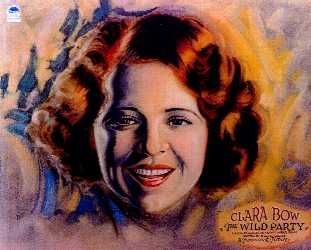 taking her jabs: "Only women can be noble," she seems to say. The image one always remembers
from The Wild Party is the shot of Stella (Clara) on the train, silently watching the college as it slips
by. She has lost everything, but she will go on. Much like Clara did in her own life, she will take
what is given her without complaint or regret. It doesn’t matter that Professor March shows up at
the last minute to go with her and provide the conventional happy ending, because one never really
believes it. Clara will go on alone and she will remain alone, in spite of everything, because very few
will ever know the truth behind her and her actions. But if she is alone, she’s also up on a pedestal –
like every great screen goddess – as beautiful and shining as any image ever captured on Celluloid.
And she will forever be the wondrous center of that misunderstood, and largely unknown, wonder
that is The Wild Party.
taking her jabs: "Only women can be noble," she seems to say. The image one always remembers
from The Wild Party is the shot of Stella (Clara) on the train, silently watching the college as it slips
by. She has lost everything, but she will go on. Much like Clara did in her own life, she will take
what is given her without complaint or regret. It doesn’t matter that Professor March shows up at
the last minute to go with her and provide the conventional happy ending, because one never really
believes it. Clara will go on alone and she will remain alone, in spite of everything, because very few
will ever know the truth behind her and her actions. But if she is alone, she’s also up on a pedestal –
like every great screen goddess – as beautiful and shining as any image ever captured on Celluloid.
And she will forever be the wondrous center of that misunderstood, and largely unknown, wonder
that is The Wild Party.
|
NOTES: BACK TO THE CLARA BOW PAGE: TO THE PRESERVATION PAGE: |